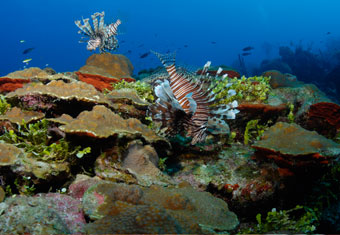

Abstract
Invasive species cause billions of dollars in damage and drive major losses in biodiversity and ecosystem function across the globe. Invasions are particularly problematic in marine habitats because the pace and scale at which invaders establish often greatly outstrips the resources available to eradicate them. My research will address this problem by developing 1) a predictive model that managers can use to determine the feasibility of complete invader eradication with available management resources, and 2), when eradication is not likely, practical guidelines for identifying management targets that achieve ‘functional’ eradication—defined as suppressing the invader below population levels which cause unacceptable ecological effects—within high-priority management locations. The predictive model of eradication success will synthesize biological and management information for marine invasions within the US and its territories. Following model development, I will work with the NOAA National Marine Sanctuaries Program and National Park Service to identify invasions occurring within US protected areas, and for which complete eradication is unlikely—invasions which are ideal candidates for management based functional eradication—and illustrate a functional eradication strategy for a subset of these invasions, including the Indo-Pacific lionfish (Pterois volitans and P. miles). Lionfish are an ideal candidate for this approach because their rapid spread throughout the Western Atlantic is causing severe impacts to native fish communities in a variety of habitat types and depths, but control activities are currently limited to local diver-based removal. I will develop a predictive tool that 1) uses an ecological model of lionfish predation that managers can use to determine the density at which lionfish deplete native fish biomass, and 2) identifies the management effort required to suppress lionfish below levels which cause negative effects. I will then test the tool within Biscayne National Park, the Florida Keys National Marine Sanctuary, and Buck Island National Monument. This project will yield freely accessible software that managers across the invaded region can use to devise control strategies that best protect native populations with available management resources.
